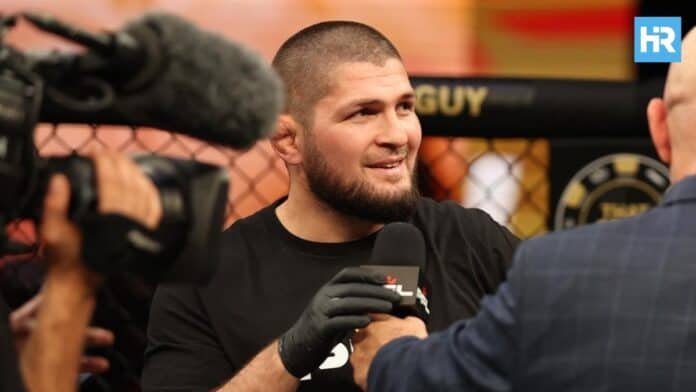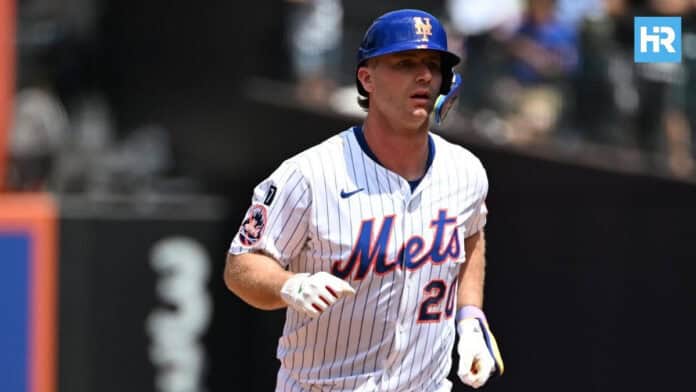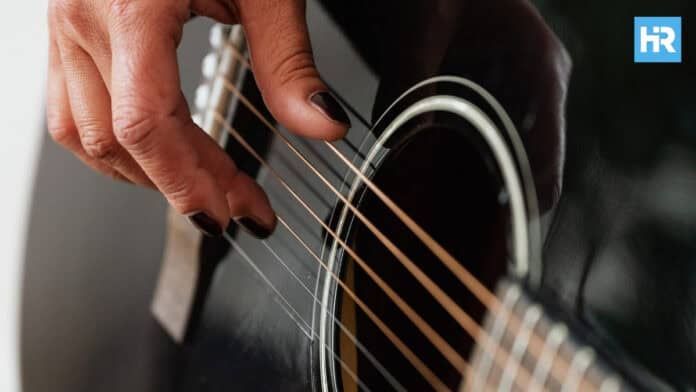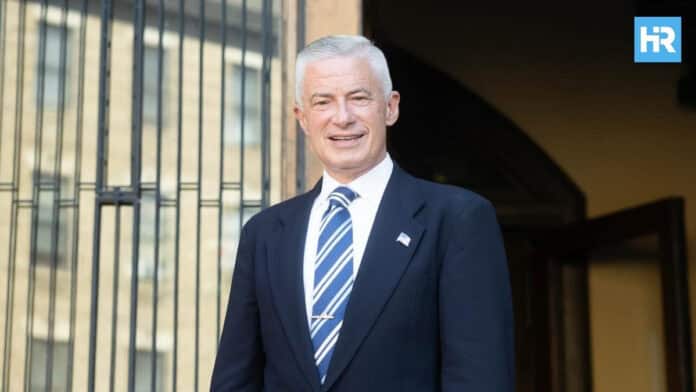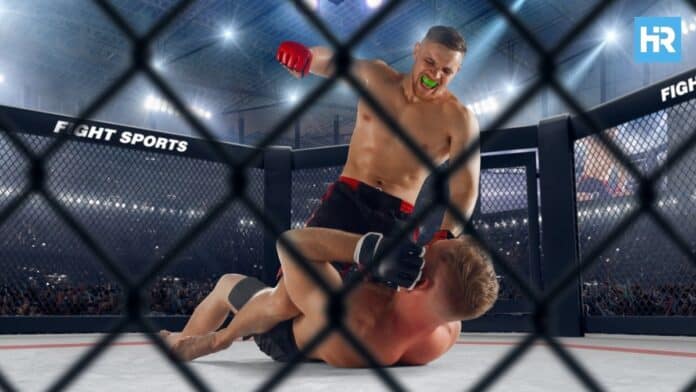The rivalry between Conor McGregor and Khabib Nurmagomedov is one of the most heated in UFC history. It began with respect in 2014, but soon turned into years of conflict, insults, and chaos that went far beyond the cage.
Over time, injuries, title changes, and personal clashes turned a potential matchup into a bitter feud that peaked at UFC 229 in 2018, the biggest event in the sport’s history. Their story includes a bus attack in New York, record-breaking pay-per-view sales, a post-fight brawl, and tension that still lingers years later.
Today, we’ll take you through the complete McGregor vs. Khabib rivalry, covering every fight, quote, date, and headline that made it one of the fiercest and most unforgettable chapters in combat sports.
- Conor McGregor and Khabib Nurmagomedov met backstage after McGregor’s win over Dustin Poirier, starting a relationship that would later turn hostile.
- On April 5, 2018, McGregor threw a hand truck at a bus carrying Khabib at the Barclays Center in New York, injuring two fighters and leading to McGregor’s arrest and legal charges.
- On October 6, 2018, Khabib defeated McGregor by neck crank submission, then jumped into the crowd to attack Dillon Danis, causing a post-fight brawl that resulted in fines, suspensions, and a $2 million purse being withheld.
The Beginning: Respect and Injuries (2014–2015)
The first interaction between Conor McGregor and Khabib Nurmagomedov took place on September 27, 2014, at UFC 178 in Las Vegas, Nevada. On that night, McGregor defeated Dustin Poirier via first-round knockout in the featherweight division. Following the victory, Khabib posted a photo on social media of himself standing beside McGregor backstage with the caption, “With Conor McGregor after his unbelievable victory in UFC 178.”
At that point, the two fighters, both seen as rising prospects within the UFC, appeared as if they were backing each other.
However, Khabib’s career soon became defined by injuries that kept him sidelined during important years of his rise. On July 14, 2014, he was scheduled to fight Donald “Cowboy” Cerrone at UFC 178, but a serious knee injury forced him to withdraw. The matchup was rescheduled for UFC 187, but another injury again removed him from the card. Later, when booked to face Tony Ferguson at The Ultimate Fighter Season 22 Finale, he was forced out once more.
Consequently, Nurmagomedov missed nearly two years of competition, and it wasn’t until 2016 that he began recovering and returning to regular activity.
Meanwhile, McGregor’s rise continued at an extraordinary pace. On March 26, 2015, ahead of his featherweight title bout against Jose Aldo, a fan asked McGregor about moving up to the lightweight division. When asked who might hold the title in the future, McGregor responded, “I think Khabib will get the lightweight belt.”
On April 2, 2015, Nurmagomedov, still out with an injury, returned fire through the media. Known for his frequent trash talk, he called out McGregor directly, using his trademark word “smash” to describe what he intended to do if they ever fought.
McGregor’s Rise to Double Champion and Khabib’s Return (2015–2016)
McGregor achieved one of the biggest wins in UFC history on December 12, 2015, when he knocked out Jose Aldo in just 13 seconds at UFC 194, winning the UFC featherweight title. The victory immediately fueled speculation about his move up to the lightweight division.
On December 27, 2015, Khabib Nurmagomedov appeared on The MMA Hour with Ariel Helwani, stating that Conor McGregor should defend his featherweight title against Frankie Edgar before chasing another belt. The interview showed a change in Khabib’s attitude, as he moved from outspoken comments to a more serious, competition-driven focus.
On January 7, 2016, McGregor officially announced his move to lightweight. He was booked to face reigning UFC lightweight champion Rafael dos Anjos, but the Brazilian withdrew due to a foot injury. Nate Diaz replaced him, launching McGregor’s new rivalry in 2016.
After a lengthy injury layoff, Khabib finally returned to action on April 16, 2016, at UFC on FOX 19 in Tampa, Florida. He was originally scheduled to fight Tony Ferguson, but Ferguson withdrew, and Khabib instead faced UFC newcomer Darrell Horcher. Nurmagomedov dominated the fight, earning a second-round TKO victory after a display of relentless takedowns and ground strikes.
The win reaffirmed Khabib’s return to elite form and his position as a top lightweight contender.
Title Tension and First Confrontations (2016–2017)
In September 2016, UFC fans expected a lightweight title fight between McGregor and newly crowned champion Eddie Alvarez. Confusion erupted on September 23, 2016, when UFC President Dana White tweeted that Alvarez would instead face Nurmagomedov. It was later reported that the UFC used Khabib’s involvement as leverage during contract negotiations with Alvarez, sending Khabib’s multiple bout agreements to pressure Alvarez into signing. Ultimately, Alvarez agreed to fight McGregor, and Khabib wasn’t happy about it.
On November 11, 2016, during UFC 205 weigh-ins in New York, McGregor and Nurmagomedov were caught on camera in a brief, heated backstage shouting exchange that lasted approximately nine seconds. The reason for the confrontation and what was said were never revealed.
The next night, on November 12, 2016, McGregor defeated Eddie Alvarez by second-round TKO at UFC 205, becoming the first fighter in UFC history to hold titles in two divisions simultaneously. Following the win, McGregor was later stripped of his featherweight title and announced that he would take time off from competition.
In early 2017, Khabib’s struggles continued. He was scheduled to fight Tony Ferguson at UFC 209 on March 3, 2017, but was forced to withdraw due to complications from his weight cut.
Later that year, McGregor shifted his focus to boxing. On August 26, 2017, he fought Floyd Mayweather Jr. in a professional boxing match at the T-Mobile Arena in Las Vegas. McGregor lost by 10th-round TKO, but the event was commercially successful.
Khabib returned to the Octagon on December 30, 2017, at UFC 219, defeating Edson Barboza by unanimous decision after dominating all three rounds with takedowns and control. This victory set up his next opportunity at the lightweight championship.
The Bus Attack and the Build-Up to UFC 229 (2018)
On April 3, 2018, a video surfaced showing Nurmagomedov and members of his team confronting Artem Lobov, a close friend and training partner of McGregor, at a hotel in Brooklyn, New York. The altercation involved Khabib’s team surrounding Lobov and physically slapping him.
Two days later, on April 5, 2018, McGregor arrived at the Barclays Center in Brooklyn with a group of what UFC President Dana White described as “20 to 30 goons.” McGregor and his team attacked a bus carrying Khabib, throwing a hand truck through a window. The attack injured fighters Michael Chiesa and Ray Borg with broken glass, forcing them out of their scheduled fights.
McGregor turned himself in to the authorities and was charged with assault and criminal mischief.
Despite the chaos, UFC 223 proceeded as planned on April 7, 2018. After two opponent changes, Khabib faced Al Iaquinta for the UFC lightweight title. Nurmagomedov won by unanimous decision, becoming the undisputed lightweight champion. After the fight, Dana White confirmed that McGregor had been officially stripped of his title.
On July 26, 2018, McGregor pleaded no contest to disorderly conduct and received five days of community service for the bus attack. The UFC chose not to impose additional penalties.
A week later, on August 3, 2018, the UFC officially announced Khabib Nurmagomedov vs. Conor McGregor for UFC 229, scheduled for October 6, 2018, at the T-Mobile Arena in Las Vegas.
UFC 229: The Record-Breaking Fight and Post-Fight Riot
UFC 229 became the biggest event in UFC history. The event recorded 2.4 million pay-per-view buys, the highest in the company’s history.
On October 6, 2018, Khabib and McGregor finally faced each other in the Octagon. Nurmagomedov controlled most of the fight with his grappling and ground-and-pound. McGregor rallied briefly in the third round, landing several strikes and giving Khabib one of the toughest rounds of his career. In the fourth round, Khabib secured a neck crank submission, forcing McGregor to tap out.
Immediately after his victory, Nurmagomedov threw his mouthpiece and jumped over the cage toward McGregor’s corner, attacking Dillon Danis, McGregor’s jiu-jitsu coach. Members of Khabib’s team also entered the cage and struck McGregor from behind.
The post-fight brawl caused chaos inside the T-Mobile Arena. The Nevada State Athletic Commission withheld Khabib’s $2 million purse. UFC officials decided not to award Khabib his belt in the cage due to safety concerns, as fans threw drinks and objects toward the Octagon.
The Fallout: Years of Silence, Insults, and Legal Battles (2019–2025)
Even though Khabib retired, the rivalry was far from over. McGregor continued to verbally attack Khabib on social media, including offensive remarks about Khabib’s late father, Abdulmanap Nurmagomedov, and personal accusations regarding Khabib’s life in Russia. Khabib has consistently refused to respond or even mention McGregor by name.
In 2025, former teammate Artem Lobov, once McGregor’s closest friend, filed a $6 million lawsuit against him concerning profits from McGregor’s whiskey company, Proper No. Twelve.
In an interview with Ariel Helwani, Lobov discussed how the feud first escalated in 2016 when Khabib repeatedly called McGregor a “chicken.” He said, “‘Chicken’ is one of the biggest insults you can give a man in Russia. In fact, if you call someone a chicken in Russia, that is a person that gets raped in prison, in male prison.” Artem Lobov explained that the term, while seemingly harmless in Western culture, is considered highly offensive in Russia and contributed to the growing tension between Khabib Nurmagomedov and Conor McGregor.
Khabib said he will never return to fighting, that a return is less than one percent likely, yet McGregor has publicly stated that he still wants a rematch, suggesting that Khabib could be tempted back due to reported tax issues in Russia. As of 2025, there has been no confirmation or response from Nurmagomedov.


